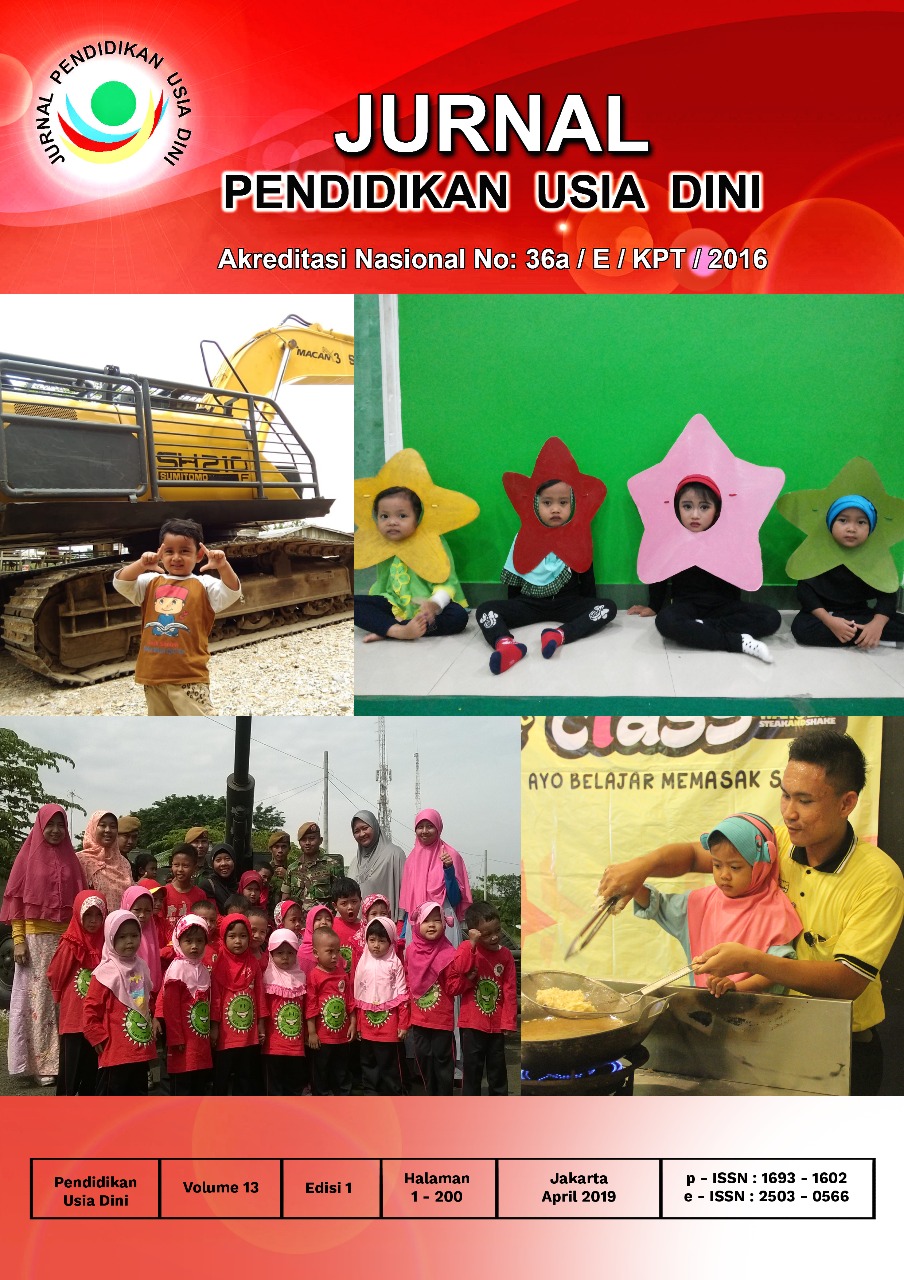The Implementation of Multi-sensory Learning at Elementary Schools in Jakarta
DOI:
https://doi.org/10.21009/10.21009/JPUD.131.08Abstract
This research aims to identify the implementation of multisensory learning at elementary schools in Jakarta. The method used through surveys to 50 elementary schools’ teachers in 5 schools. Data was collected by using questionnaire that revealed the implementation of multisensory learning. The result of this study showed that the use of multisensory learning could be more effective in maximizing learning. Through multisensory learning, teacher can in-volve students actively in the learning process and facilitate all students with different learning styles. Multisensory learning can be used in all lesson that integrated with curriculum and has significant implications in the real-life learning. The obstacle in implementing this learning model is founded about the lack of using of audiovisual technology and many schools do not implemented the multisensory learning.
Keywords: Multisensory learning, Elementary School, Audiovisual Media.
References
Aja, S. N., Eze, P. I., Igba, D. I., Igba, E. C., Nwafor, C. C., & Nnamani, S. C. (2017). Using multi-sensory instruction in managing classroom for effective teaching and learning. International Journal of Applied Engineering Research, 12(24), 15112–15118.
Blomert, L., & Froyen, D. (2010). Multi-sensory learning and learning to read. International Journal of Psychophysiology, 77(3), 195–204. https://doi.org/10.1016/j.ijpsycho.2010.06.025
Child1st. (2019). What is multisensory learning why it so effective. Retrieved April 25, 2019, from child1st.com website: https://child1st.com/blogs/resources/what-is-multisensory-learning-why-is-it-so-effective
Finotti, G., Migliorati, D., & Costantini, M. (2018). Multisensory integration, body representation and hyperactivity of the immune system. Consciousness and Cognition, 63(October 2017), 61–73. https://doi.org/10.1016/j.concog.2018.06.009
Gorjian, B., Hayati, A., & Barazandeh, E. (2012). An evaluation of the effects of art on vocabulary learning through multi-sensory modalities. Procedia Technology, 1, 345–350. https://doi.org/10.1016/j.protcy.2012.02.072
Heikkilä, J., & Tiippana, K. (2016). School-aged children can benefit from audiovisual semantic congruency during memory encoding. Experimental Brain Research, 234(5), 1199–1207. https://doi.org/10.1007/s00221-015-4341-6
Jurban, S. (2011). Using Multi Sensory Approach for Teaching English Skills and Its Effect on Students ’ Achievement at Jordanian School. European Scientific Journal, 8(22), 50–61.
Komalasari, M. D. (2005). Metode Multisensori untuk Meningkatkan Kemampuan Membaca pada peserta didik Disleksia di Sekolah Dasar. Proseding Seminar Nasional PGSD UPY, 97–110. Yogyakarta.
Krueger Fister, J., Stevenson, R. A., Nidiffer, A. R., Barnett, Z. P., & Wallace, M. T. (2016). Stimulus intensity modulates multisensory temporal processing. Neuropsychologia, 88, 92–100. https://doi.org/10.1016/j.neuropsychologia.2016.02.016
Matusz, P. J., Wallace, M. T., & Murray, M. M. (2017). A multisensory perspective on object memory. Neuropsychologia, 105, 243–252. https://doi.org/10.1016/j.neuropsychologia.2017.04.008
Morin, A. (2019). Multisensory Instruction: What You Need to Know. Retrieved April 25, 2019, from https://www.understood.org/en/school-learning/partnering-with-childs-school/instructional-strategies/multisensory-instruction-what-you-need-to-know
Nidiffer, A. R., Stevenson, R. A., Krueger Fister, J., Barnett, Z. P., & Wallace, M. T. (2016). Interactions between space and effectiveness in human multisensory performance. Neuropsychologia, 88, 83–91. https://doi.org/10.1016/j.neuropsychologia.2016.01.031
Nurjanah, E. (2017). Metode Multisensori Terhadap Kemampuan Mengenal Lambang Bilangan 1-10 Pada Anak Autis. Jurnal Pendidikan Khusus, 1–10.
Olivia, P. F. (1992). Developing the Curriculum (Third Edit). New York: Harper Collins Publishers Inc.
Praveen, A. V. (2019). What is Multisensory Teaching Techniques? Retrieved April 25, 2019, from https://www.lexiconreadingcenter.org/what-is-multisensory-teaching-techniques/
Shams, L., & Seitz, A. R. (2008). Benefits of multisensory learning. Trends in Cognitive Sciences, 12(11), 411–417. https://doi.org/10.1016/j.tics.2008.07.006
Taljaard, J. (2016). A review of multi - sensory technologies in a Science , Technology , Engineering , Arts and M athematics ( STEAM ) classroom. Journal of Learning Design, 9(2), 46–55.
Downloads
Published
How to Cite
Issue
Section
License
JURNAL PENDIDIKAN USIA DINI work is licensed under a Creative Commons Attribution 4.0 International License. (http://creativecommons.org/licenses/by/4.0/)





